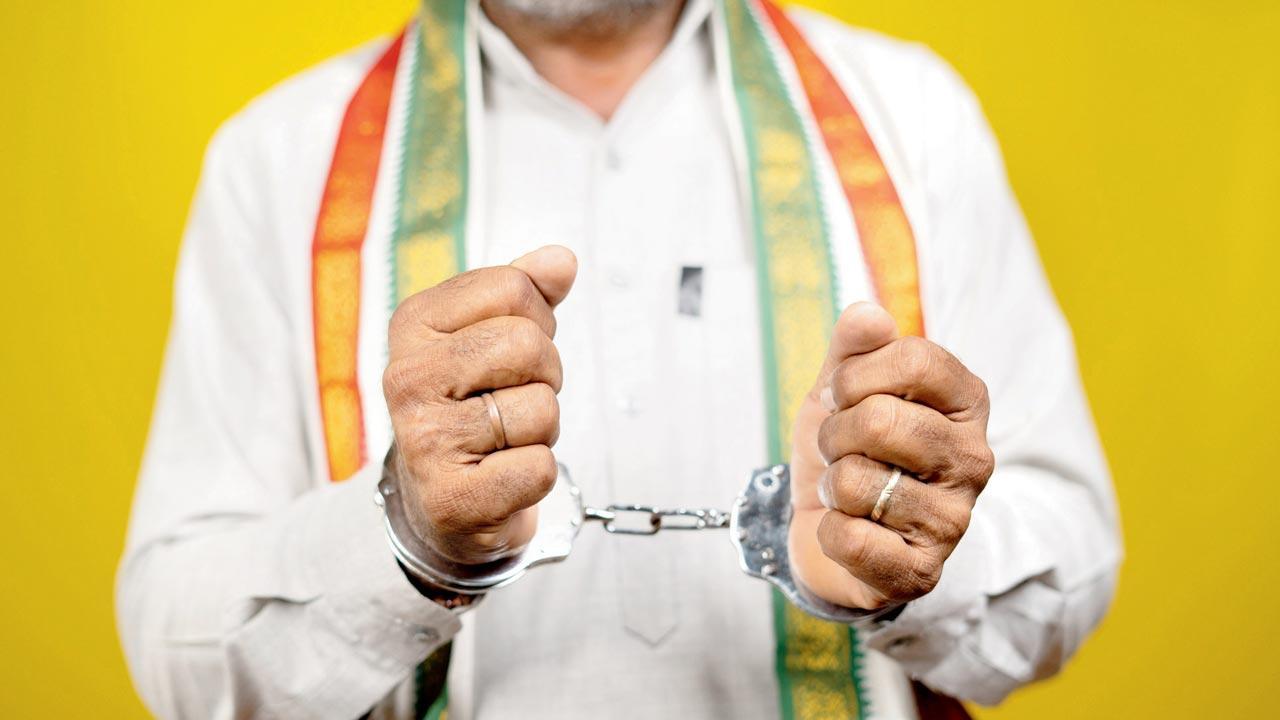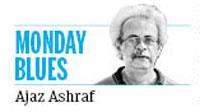Only the wealthy can dream of contesting elections, an exercise that can be viewed as a means to control the masses and legitimise State policies promoting the interests of big businesses

In 2019, 14 per cent of all candidates had been booked for serious crimes. But such candidates comprised 30 per cent of that Lok Sabha. Representation pic
 India’s democracy is becoming a rich person’s game, in which criminal antecedents of contenders are seldom disadvantageous. It is an arena from where those not wealthy or inclined to committing crimes are increasingly excluded. Our democracy spawns a governing class, aka political class, which treats elections as an instrument to control crores of Indians, or voters, with their consent, for promoting a variety of interests, not least those of big businesses.
India’s democracy is becoming a rich person’s game, in which criminal antecedents of contenders are seldom disadvantageous. It is an arena from where those not wealthy or inclined to committing crimes are increasingly excluded. Our democracy spawns a governing class, aka political class, which treats elections as an instrument to control crores of Indians, or voters, with their consent, for promoting a variety of interests, not least those of big businesses.
ADVERTISEMENT
Shocked, are you? You must reflect on the data on myneta.info, a platform of the Association for Democratic Reforms. It shows 88 per cent of members of the 2019 Lok Sabha were crorepati, up from 82 per cent in 2014. Yet, of all candidates who contested in the 2019 elections, only 29 per cent were crorepati, up by two per cent in comparison to 2014. The might of money simply knocks out most non-crorepatis from the fray. Clearly, the richer the candidate, the greater his/her chances of triumphing.
In 2019, only 14 per cent of all candidates had been booked for serious crimes. But this category of candidates comprised 30 per cent of that Lok Sabha. Likewise, in 2014, 11 per cent of candidates faced serious criminal cases, yet their representation in the Lok Sabha doubled to 22 per cent. Guess the probability of a crorepati-criminal getting elected would be exceptionally high.
As the cost of elections grows, political parties, to reduce their election expenditure, seem to prefer fielding crorepatis in elections. A report of the Centre for Media Studies (CMS) says a sum of Rs 60,000 crore was spent on the 2019 elections, of which the Election Commission of India accounted for Rs 10,000 crore. Stunningly, of the remaining Rs 50,000 crore, political parties spent five per cent less than candidates did. The latter blew away Rs 24,000 crore. These figures, the CMS report says, are the “tip of the iceberg”, impossible as it is to track the flow of money not visible.
In 1999, the cost of the LS election was Rs 9,000 crore, grew slowly to Rs 30,000 crore in 2014, and then doubled to Rs 60,000 crore in 2019. The richer the nation becomes, the higher the election expenditure, it would seem. You would think money lubricating the election machinery is true for all democracies, even those in the West. But unlike the West, India remains heartbreakingly unequal. In a country where a monthly income of Rs 25,000 puts one among the top 10 per cent earners, the barrier to entering politics for most is nearly insurmountable.
Selling their votes, thus, becomes a temptation for poorly paid Indians. The CMS study estimates that of the R60,000 crore spent on the 2019 elections, 20-25 per cent was paid directly to voters. To CMS researchers, 10-12 per cent of voters confessed to having received cash directly during the 2019 election. Another two-thirds knew of someone who had received money.
Indeed, vote-swings are, partly, a function of money.
The process of paying voters is complex. In Money and Votes: Following Flows through Mumbai and Bihar, a chapter in Costs of Democracy, Lisa Björkman and Jeffrey Witsoe show there is a chain of middlemen through whom money is transferred to voters. Each middleman has his supporters. It is on this network of middlemen that people depend for employment, cash bailouts to tide over emergencies, and assistance in their dealings with the government. Candidates pay money to these middlemen and they, in turn, share it with their supporters. In one sense, money-for-vote symbolises an enduring commitment of patrons to their supporters.
Witsoe, in his study of Bihar, shows the network of middlemen is often anchored in one caste or another. Caste loyalties play a role in voting, as do ‘ideological’ commitment to political parties broadly representing their interests. But money the candidates must pay even their caste brethren, although the amount dished out in such cases would be lower than the average in a given region in the same election.
Despite the lavish election expenditure, the percentage of votes a ruling party or the principal one in a coalition ultimately gets is always far below 50 per cent of the total electorate. In 2009, the voter turnout was 58.21 per cent and the Congress polled 28.55 per cent of votes, which works out to just 16.6 per cent of the total electorate. The turnout in 2014 was 66.64 per cent and the BJP bagged 31 per cent of votes, which is 20.6 per cent of the total electorate. The 37.36 per cent of votes the BJP gathered in 2019, with a voter turnout of 67.40 per cent, was 25.18 per cent of all voters.
Any Indian government, thus, has the consent to rule of only a minority of the citizens. Yet governments frame policies in the interests of big businesses, as the Electoral Bond data has established beyond doubt. Governments divert forests for industry, appropriate land for ‘development’, alter terms of employment, regulate economy, education, social media, marriage and divorce, misuse draconian laws, etc. All this is considered legitimate because these are the acts of a government we, the people, elected, even though, in reality, less than 30 per cent of Indians did so. Democracy in India is not vibrant but a charade. You still must vote, though, because the quality of the charade matters immensely.
The writer is a senior journalist
Send your feedback to mailbag@mid-day.com
The views expressed in this column are the individual’s and don’t represent those of the paper
 Subscribe today by clicking the link and stay updated with the latest news!" Click here!
Subscribe today by clicking the link and stay updated with the latest news!" Click here!







